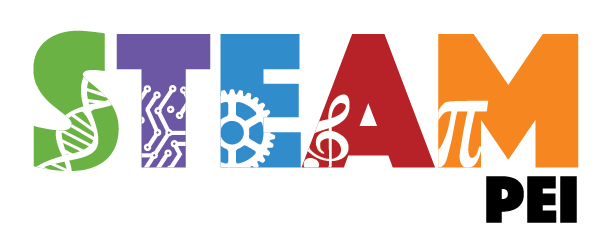Rotor - mobile cms

Description in Russian







Welcome! We thank you for choosing to use our script for your site. Rotor mobile cms is a functionally complete open source content management system written in PHP. It uses a MySQL database to store the contents of your site.
Rotor is a flexible, powerful and intuitive system with minimal hosting requirements, a high level of protection and an excellent choice for building a website of any complexity.
The main feature of Rotor is low load on system resources and high speed, even with a very large audience of the site, the load on the server will be minimal, and you will not experience any problems with displaying information.
Installing the Rotor engine (From the archive)
Configure the site so that public is the root directory (Not necessary for apache)
Unpack the archive
Set up the .env configuration file, environment, data for accessing the database, administrator login and email, and data for sending emails, sendmail or smtp.
Set write permissions to all directories inside public/uploads, public/assets/modules, bootstrap/cache and storage
Go to the main page of the site, you will be automatically transferred to the installer
Complete all installer conditions
Installing the Rotor engine (From the repository)
Configure the site so that public is the root directory (Not necessary for apache)
Unpack the archive
Configure the .env configuration file, the environment, the data for accessing the database, the administrator's login and email, and the data for sending mail, sendmail or smtp. If you install CMS manually, then rename the configuration file .env.example to .env
Set write permissions to all directories inside public/uploads, public/assets/modules, bootstrap/cache and storage or execute the command php artisan app:permission
Install and configure the dependency manager Composer.
or you can download the finished package
composer.phar
and run it through the command
php composer.phar install
Go to the site directory run the command in the console composer install
Create a database with utf8mb4 encoding and a user for it from the control panel on your server, during the installation of the script, you will need to enter this data to be connected to the .env file
CREATE DATABASE rotor CHARACTER SET utf8mb4 COLLATE utf8mb4_unicode_ci;
Migrate using the console command php artisan migrate
Fill out the database using the command php artisan db:seed
Installation by one command
To install the stable version, go to the site directory in the console and execute the command
composer create-project visavi/rotor .
To install the latest version, run the command
composer create-project --stability=dev visavi/rotor .
Requirements
Minimal PHP version required for PHP 8.1, MySQL 5.7.8, MariaDB 10.2.7 or Postgres 9.2
Migrations and database seeder
Current migration status php artisan migrate:status
Create migrations php artisan make:migration CreateTestTable
Performing migrations php artisan migrate or php artisan migrate --path=/database/migrations/CreateTestTable.php to migrate to a specific version
Rollback last migration php artisan migrate:rollback or php artisan migrate:rollback --step=1 to rollback all migrations to a specific version
Create seeder php artisan make:seeder UsersSeeder
Performing seeder php artisan db:seed or php artisan db:seed --class=UserSeeder for a specific seed
Caching Settings
If you set APP_ENV = production, then routes and project configuration settings will be cached
Cron settings
* * * * * php /path-to-site/artisan schedule:run >>/dev/null 2>&1
Apache settings
There are 2 ways to install the engine on a regular hosting
Default. All files are placed in the public_html directory. htaccess in the root of the site, redirects all requests to the public directory.
.htaccess inside public handles all requests and redirects them to index.php
If method 1 is not suitable or does not work well, then you can place all files on the same level as public_html, and transfer all files from public to public_html.
You also need to specify that public_html will be instead of the public directory, for this you need to uncomment the code in the app/Providers/AppServiceProvider.php file.
.htaccess at the root of the engine can be removed.
Nginx settings
For the paths to be processed correctly, you need to configure the site.
Add the following entry to the server section:
if (!-d $request_filename) {
rewrite ^/(.*)/$ /$1 permanent;
}
necessary to remove slashes at the end of the path and prohibit viewing php files
location ~* /(assets|themes|uploads)/.*.php$ {
deny all;
}
In the location / section, you must replace the line
try_files $uri $uri/ =404
to
try_files $uri $uri/ /index.php?$query_string;
Run without Nginx
If there is no Nginx server on the local machine, it is sufficient to use the built-in PHP server through the console. To raise the server and access the system you need:
While in the console, go to the public folder Run the command in the consolephp -S localhost:8000 or php artisan serve
Enter the browser link localhost:8000
If, when the server starts, the console displays information that port 8000 is busy, try port 8080
Webpack settings
To build css and js, you need to install npm and nodejs, then run the commands
npm ci
npm run prod
Author
Author: Vantuz
Email: admin@visavi.net
Site: https://visavi.net
Skype: vantuzilla
Phone: +79167407574
License
The Rotor is open-sourced software licensed under the GPL-3.0 license
版权声明:
1、该文章(资料)来源于互联网公开信息,我方只是对该内容做点评,所分享的下载地址为原作者公开地址。2、网站不提供资料下载,如需下载请到原作者页面进行下载。
3、本站所有内容均由合作方或网友上传,本站不对文档的完整性、权威性及其观点立场正确性做任何保证或承诺!文档内容仅供研究参考学习用!
4、如文档内容存在违规,或者侵犯商业秘密、侵犯著作权等,请点击“违规举报”。



